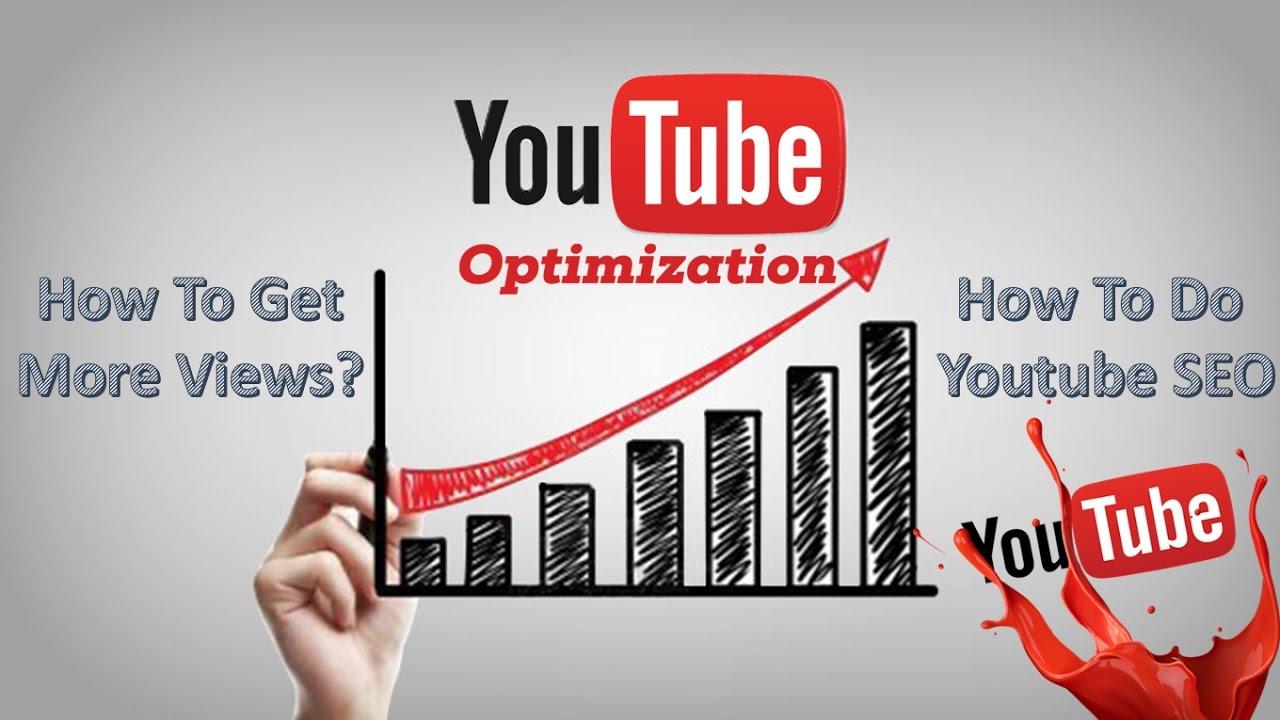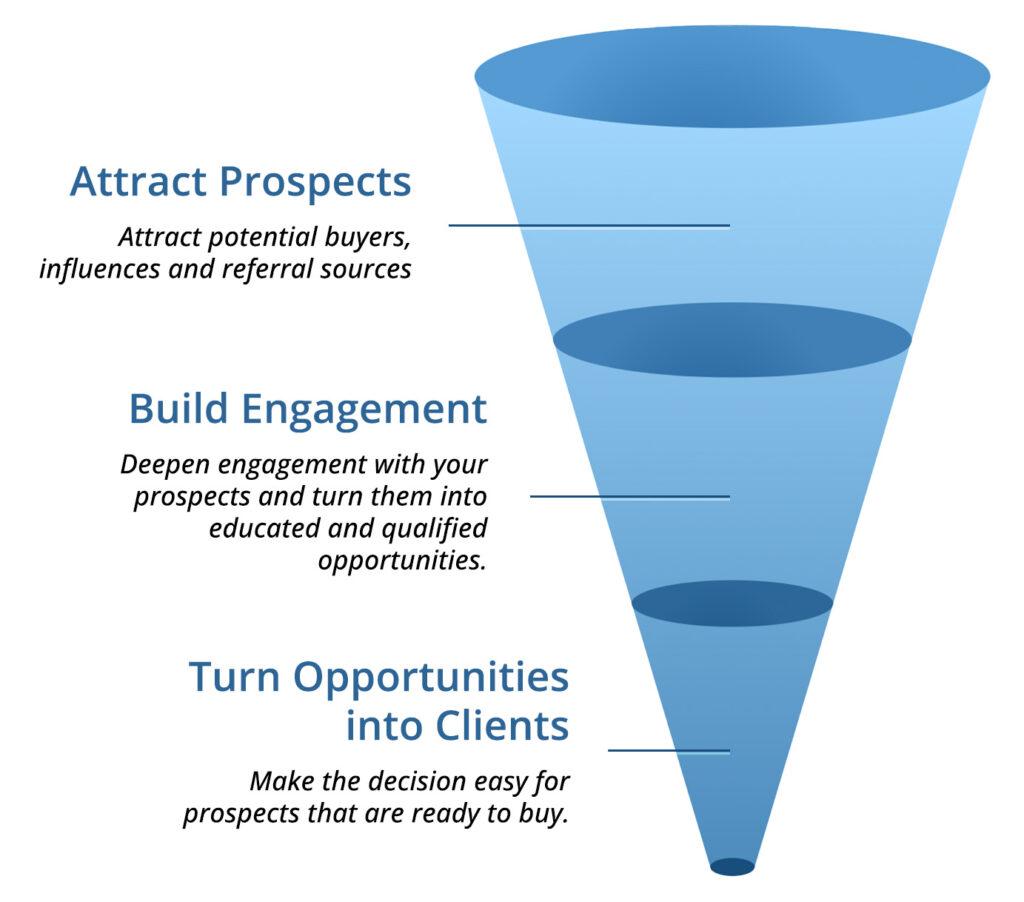
7 Business Development Strategies: Proven Ways to Grow Fast
Hey there, ambitious entrepreneurs and savvy business leaders! If you’re reading this, chances are you’re looking to supercharge your growth and take your business to the next level. Well, you’re in the right place! In today’s fast-paced and competitive landscape, having a solid business development strategy is more crucial than ever. But don’t worry – you don’t need a crystal ball to predict your success. What you need are actionable, proven strategies that can propel your business forward.
In this article, we’ll dive into seven game-changing business development strategies that are not just theoretical concepts but have been tried, tested, and proven effective by companies across various industries. From nurturing meaningful partnerships to leveraging the power of technology, these strategies will equip you with the tools you need to expand your reach, increase your revenue, and ultimately, grow fast. So, grab a cup of coffee, get comfy, and let’s explore how you can turn your business dreams into reality! Ready? Let’s go!
Unlocking Growth with Business Development Strategies
In today’s fast-paced business landscape, companies must continuously innovate and adapt their strategies to stay competitive. Leveraging effective business development strategies can facilitate rapid growth, enhance customer engagement, and broaden market reach. Here are some proven methods that businesses can implement to unlock their full potential.
Build Strategic Partnerships
Forming alliances with complementary businesses can significantly amplify your reach. Collaborative efforts can lead to cross-promotional opportunities and shared resources, minimizing costs while maximizing impact. Focus on:
- Identifying potential partners with aligned goals.
- Creating mutually beneficial arrangements.
- Regularly evaluating the partnership’s effectiveness.
Leverage Data Analytics
In an era driven by data, harnessing analytics can provide valuable insights into market trends and customer behaviors. Utilizing these insights allows businesses to tailor marketing strategies, streamline operations, and enhance customer satisfaction. Key steps include:
- Investing in robust data analytics tools.
- Training your team to interpret data effectively.
- Making data-driven decisions to refine business strategies.
Enhance Your Online Presence
In the digital age, a strong online presence is crucial. A well-optimized website and active social media channels can significantly boost brand visibility. Consider these tactics:
- Regularly updating your website with engaging content.
- Utilizing SEO strategies to improve search engine rankings.
- Engaging with audiences on social platforms to foster community.
Focus on Customer Experience
Delivering exceptional customer experiences can lead to increased loyalty and repeat business. Businesses should prioritize understanding their customers’ needs and preferences to tailor their offerings. Implement strategies like:
- Soliciting and acting on customer feedback.
- Providing personalized interactions and solutions.
- Implementing loyalty programs to reward repeat customers.
Invest in Employee Development
A knowledgeable and motivated workforce is a pivotal asset for any growing business. Investing in employee training and development not only enhances skills but also boosts morale. Strategies include:
- Offering workshops and training sessions.
- Encouraging a culture of continuous learning.
- Recognizing and rewarding employee contributions.
Adopt Agile Methodologies
Flexibility is key in a dynamic market. Agile methodologies enable businesses to respond swiftly to changes and customer demands. Embrace practices such as:
- Iterative development cycles to refine products or services.
- Regularly assessing market feedback for quick adaptations.
- Encouraging team collaboration and communication.
Utilize Effective Networking
Networking is not just for job seekers; it’s a vital component of business growth. Establishing a strong network can lead to opportunities for collaboration and referrals. To maximize your networking efforts:
- Attend industry events and conferences.
- Engage in online forums and social media groups relevant to your niche.
- Follow up with contacts to foster relationships.
Understanding the Importance of Business Development
In today’s competitive landscape, the importance of cultivating robust business development strategies cannot be overstated. It goes beyond merely selling a product or service; it’s about establishing lasting relationships and creating sustainable growth. A strong business development strategy can propel your company into new markets, enhance customer loyalty, and ultimately lead to increased revenue.
At its core, business development is about understanding your market and leveraging that knowledge to identify opportunities. This involves a profound comprehension of both your customers’ needs and your competitors’ strengths and weaknesses. By conducting thorough market research, you can pinpoint gaps that your business can fill, allowing for tailored offerings that resonate with your target audience.
One key aspect of effective business development is networking. Building a network of contacts can provide invaluable insights and open doors to new partnerships, collaborations, and even funding opportunities. Engaging with industry leaders, attending events, and participating in online forums can significantly expand your reach and enhance your credibility in the market.
Moreover, innovative marketing strategies play a critical role in business development. Through the use of digital marketing, social media, and content creation, businesses can not only promote their products but also establish their brand identity. This multifaceted approach helps in creating a community around your brand, fostering loyalty among existing customers while attracting new prospects.
To illustrate the impact of strategic business development, consider the following table showcasing how different strategies can lead to growth:
| Strategy | Impact |
|---|---|
| Networking | Access to new markets and partnerships |
| Market Research | Identifying customer needs and market gaps |
| Digital Marketing | Increased brand visibility and engagement |
| Customer Feedback | Improved product offerings and customer satisfaction |
Another critical element is the focus on customer relationships. Nurturing these relationships can lead to repeat business, referrals, and a strong reputation in the industry. Implementing CRM systems can streamline this process, helping you track interactions and tailor your communications to meet individual customer needs.
Lastly, constantly evaluating and adapting your business development strategies is essential. The market is ever-evolving, and what works today might not be effective tomorrow. By regularly assessing your performance and remaining flexible, you can pivot your strategies to align with new trends and consumer behaviors.
business development is a comprehensive approach that requires careful planning and execution. By leveraging networking, innovative marketing, and a keen understanding of your customers, you can position your business for sustainable growth and success. Embracing these strategies not only enhances your market presence but also empowers your organization to thrive in an increasingly dynamic business environment.

Identifying Your Target Market for Maximum Impact
To drive growth in your business, understanding who your customers are is crucial. Identifying your target market can significantly enhance your marketing efforts, allowing you to tailor your messaging and offerings to meet their specific needs. Here are some effective strategies to help you pinpoint your ideal customers:
- Analyze Your Current Customer Base: Start by taking a close look at your existing customers. What common characteristics do they share? Consider factors such as age, gender, location, income level, and purchasing habits. This will provide you with a solid foundation to build upon.
- Conduct Market Research: Utilize surveys, interviews, and focus groups to gather insights about potential customers. This qualitative data can reveal their preferences, pain points, and behaviors, allowing you to refine your target market.
- Segment Your Audience: Divide your market into smaller segments based on specific criteria. This could include demographics, psychographics, or buying behavior. Tailoring your marketing strategies for each segment can lead to higher engagement and conversion rates.
- Analyze Competitors: Research your competitors to understand who they are targeting. Explore their marketing strategies and customer engagement methods. Identifying gaps in their approach can help you position your brand more effectively.
- Leverage Social Media Insights: Use platforms like Facebook, Instagram, and LinkedIn to gather data about your audience. Most social media platforms provide analytics that can help you understand the demographics and interests of your followers.
- Create Buyer Personas: Develop detailed profiles of your ideal customers. Consider their goals, challenges, and behaviors. This will not only guide your marketing strategies but also help in product development.
Once you have identified your target market, it’s essential to continually refine your understanding as trends and preferences evolve. By staying attuned to changes in your market, you can adjust your strategies accordingly and maintain a competitive edge.
Remember, the goal is not just to reach a large audience but to connect with the right audience. When you tailor your marketing efforts to the specific needs and desires of your target market, you’ll find that your impact multiplies, leading to increased sales and customer loyalty.
| Characteristic | Importance |
|---|---|
| Demographics | Helps define who your customers are. |
| Psychographics | Provides insight into your customers’ motivations. |
| Behavioral Data | Indicates how customers interact with your brand. |
| Market Trends | Shows how customer needs are changing over time. |
Incorporating these strategies into your business development plan will not only help you identify your target market but also set the stage for successful marketing campaigns that resonate with your audience. By focusing on the right people, you can maximize your impact and accelerate your growth.
Leveraging Networking for New Opportunities
In today’s fast-paced business environment, connections can often mean the difference between stagnation and success. Building a robust network is not just about exchanging business cards; it’s about cultivating meaningful relationships that can open doors to new opportunities.
To truly harness the power of networking, consider the following tactics:
- Attend Industry Events: Trade shows, conferences, and seminars are goldmines for networking. They provide an opportunity to meet like-minded professionals and exchange ideas. Always come prepared with your elevator pitch and a few questions that can spark discussions.
- Join Professional Associations: Becoming a member of relevant organizations can expand your reach and provide access to exclusive resources and events. These platforms often host networking sessions that can lead to fruitful collaborations.
- Utilize Social Media: Platforms like LinkedIn are designed for professional networking. Regularly update your profile, share insightful content, and engage with others in your industry. This not only positions you as a thought leader but also makes you more visible to potential partners.
- Follow Up: After meeting someone new, a follow-up message is crucial. A simple thank-you note or a LinkedIn connection request can go a long way in solidifying that initial meeting and opening the door for future conversations.
Moreover, networking should not be a one-way street. Be proactive in offering assistance to others in your network. This can create a mutually beneficial relationship where both parties can thrive. Sharing a resource, providing advice, or making an introduction can enhance your reputation and encourage others to reciprocate when you need support.
Consider creating a networking plan. This could include:
| Goal | Action Steps | Timeline |
|---|---|---|
| Meet 5 new contacts | Attend 2 industry events | This month |
| Engage online | Post weekly on LinkedIn | Ongoing |
| Follow-up on new contacts | Send thank-you notes | Within a week of meeting |
Lastly, don’t underestimate the value of existing contacts. Regularly check in with your current network. You never know when an opportunity might arise from a past connection. Establishing a routine for outreach can keep your relationships warm and can lead to new opportunities down the line.
In essence, leveraging your network effectively requires a blend of strategy, genuine interest, and consistent effort. By investing time in building and nurturing relationships, you can unlock a wealth of opportunities that can drive your business growth in unprecedented ways.
Building Strategic Partnerships to Expand Reach
In today’s competitive landscape, forming strategic partnerships can be a game-changer for businesses looking to expand their reach and enhance their market presence. By collaborating with like-minded organizations, you can tap into new customer bases, share resources, and leverage each other’s strengths. Here are some effective ways to build these valuable connections:
- Identify Complementary Businesses: Look for companies that offer products or services that complement yours. This alignment can create mutually beneficial opportunities, such as joint marketing campaigns or bundled offerings.
- Leverage Industry Networks: Attend industry events, conferences, and networking gatherings. Engaging with others in your field not only helps you stay informed about market trends but also opens doors to potential partners.
- Utilize Online Platforms: Websites like LinkedIn or industry-specific forums can be excellent places to connect with potential partners. Engaging in discussions and showcasing your expertise can attract the right collaborators.
- Establish Clear Goals: Before entering any partnership, ensure both parties have aligned objectives. Clearly defined goals help mitigate misunderstandings and ensure everyone is on the same page.
Once you’ve identified potential partners, it’s essential to take the time to build trust and establish a strong foundation for collaboration. Here’s how to foster those key relationships:
- Open Communication: Regular and transparent communication lays the groundwork for a successful partnership. Schedule check-ins to discuss progress and address any concerns.
- Share Resources: Consider shared marketing efforts, co-hosted events, or even collaborative product development. Pooling resources can amplify reach without a significant increase in cost.
- Measure Success Together: Set metrics to evaluate the success of your partnership. Sharing results fosters accountability and encourages continued collaboration.
To illustrate the potential impact of strategic partnerships, consider the following example:
| Partner A | Partner B | Combined Outcome |
|---|---|---|
| Local Coffee Shop | Nearby Bookstore | Joint promotional events that increased foot traffic by 30% for both businesses. |
| Fitness Center | Nutritional Supplement Brand | Co-branded health workshops that resulted in a 25% increase in membership sign-ups. |
strategic partnerships can dramatically expand your reach and enhance your business offerings. By carefully selecting partners and nurturing those relationships, you can create a synergistic effect that benefits all parties involved. Remember, collaboration is not just about sharing resources; it’s about building a community that supports collective growth.
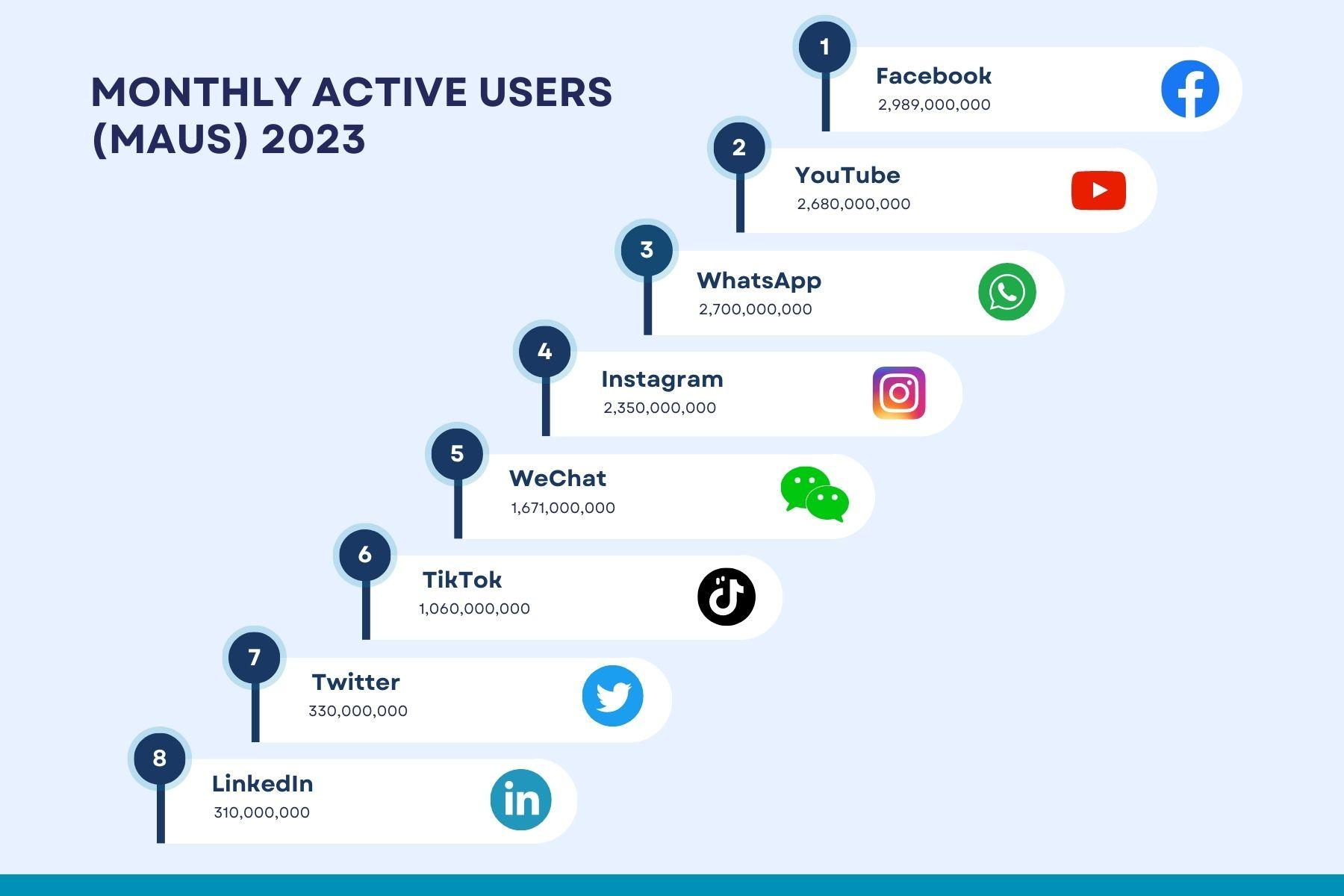
Harnessing the Power of Social Media for Growth
In today’s fast-paced digital landscape, social media has become an indispensable tool for businesses looking to expand their reach and connect with their audience. By harnessing the potential of various social platforms, companies can engage with customers in a way that fosters loyalty and drives growth.
To effectively leverage social media, consider these strategies:
- Identify Your Target Audience: Understanding who your audience is will help tailor your messaging. Use analytics tools to monitor demographics and preferences.
- Create Engaging Content: Content is king, and on social media, it needs to be visually appealing and shareable. Infographics, videos, and behind-the-scenes glimpses can capture attention.
- Utilize Paid Advertising: Organic reach is valuable, but sometimes it’s necessary to invest in paid ads to broaden your visibility and target specific audiences effectively.
- Engagement is Key: Don’t just post and ghost! Actively engage with your followers by responding to comments and messages promptly.
- Collaborate with Influencers: Partnering with influencers can help you tap into their audience, lending credibility and expanding your reach.
- Analyze and Adapt: Regularly review your social media performance. What types of posts generate the most engagement? Use this data to refine your strategy.
To illustrate the impact of strategic social media use, consider the following examples:
| Business | Platform Used | Result |
|---|---|---|
| Brand A | Increased follower count by 150% in 6 months | |
| Brand B | Achieved 50% more website traffic through targeted ads | |
| Brand C | Doubled customer inquiries within 3 months |
Additionally, you can enhance your brand’s visibility and authority through user-generated content. Encourage your customers to share their experiences with your products or services. This not only fosters community but also provides authentic content that resonates with potential customers.
remember that consistency is crucial. Establish a regular posting schedule and stick to it. This keeps your brand top of mind and maintains engagement with your audience over time.
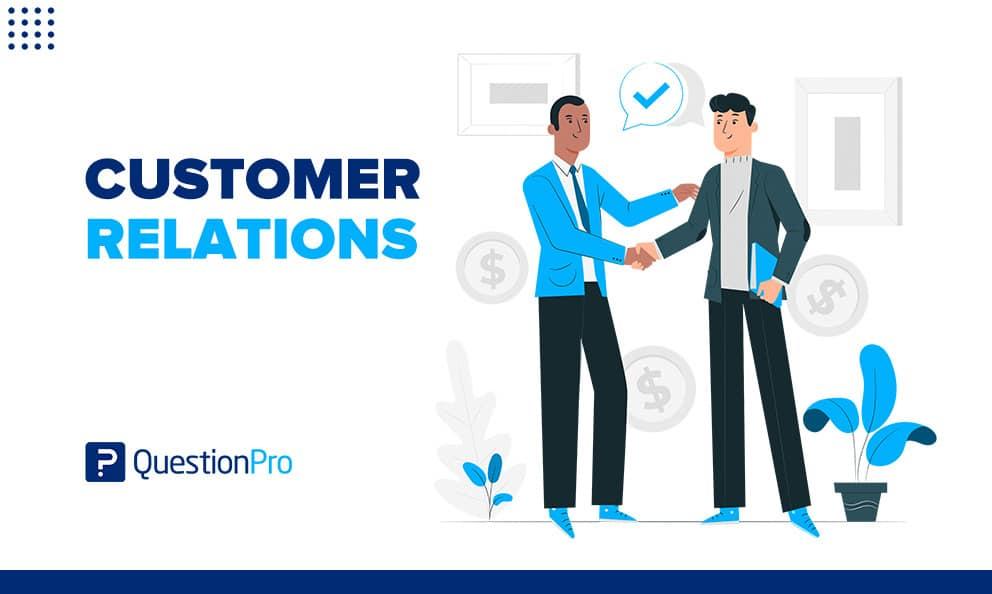
Investing in Customer Relationships for Long-Term Success
In the competitive landscape of modern business, nurturing customer relationships is not merely an option; it’s a necessity for sustainable growth. Strengthening your connections with customers can lead to enhanced loyalty, increased referrals, and ultimately, higher revenue. Here are several strategies to invest in these vital relationships:
- Personalized Communication: Use data analytics to tailor your communications. Understand your customers’ preferences and needs, and engage them with personalized messages that resonate.
- Feedback Loops: Encourage customers to share their thoughts. Implement surveys or feedback forms and act on their suggestions. This shows that you value their opinion and are committed to improvement.
- Consistent Engagement: Stay in touch through newsletters, social media, or even text messages. Regular updates on new products, services, or company news keep your brand top of mind.
- Loyalty Programs: Create programs that reward repeat customers. Offer discounts, exclusive products, or early access to new launches—these incentives can significantly enhance customer retention.
Another crucial aspect is understanding the lifecycle of your customer relationships. Mapping out the stages—from acquisition to retention—can provide insights into how to enhance each interaction. You can visualize this with a simple table:
| Stage | Key Focus | Action Items |
|---|---|---|
| Awareness | Brand Introduction | Content Marketing, Advertising |
| Consideration | Building Trust | Customer Reviews, Testimonials |
| Purchase | Seamless Experience | Easy Checkout, Support Access |
| Retention | Ongoing Engagement | Loyalty Programs, Follow-ups |
Building strong customer relationships also requires a culture of empathy within your organization. Train your team to prioritize customer satisfaction and handle complaints with care. A well-trained staff that genuinely cares about customers can create a profound impact on how clients perceive your business.
Moreover, consider leveraging technology to streamline communication and enhance your service. Implement customer relationship management (CRM) tools to keep track of interactions and service history. These systems can help you anticipate customer needs and respond proactively, solidifying trust and satisfaction.
Lastly, remember that long-term success is about creating advocates for your brand. Customers who feel valued and connected to your business are more likely to refer friends and colleagues. By investing time and resources into building these relationships, you set the foundation for a thriving business that can weather market fluctuations and evolve with changing consumer expectations.

Utilizing Data Analytics to Drive Informed Decisions
In today’s rapidly evolving business landscape, the integration of data analytics into decision-making processes has transformed the way organizations operate. By harnessing the power of data, companies can uncover valuable insights that guide their strategies, ultimately leading to smarter, more informed choices. Here’s how you can leverage analytics for your business development efforts.
Firstly, identify key performance indicators (KPIs) that align with your business objectives. These metrics serve as the backbone of your analytics efforts, allowing you to measure success and track progress over time. Common KPIs include:
- Customer acquisition cost
- Customer lifetime value
- Sales conversion rates
- Market share
Once you have defined your KPIs, the next step is to collect and analyze data from various sources. This might include sales records, customer feedback, and market research. Utilizing tools such as Google Analytics, CRM software, or specialized data platforms can help streamline this process. The insights gained from data analysis can inform everything from product development to marketing strategy, ensuring you’re making decisions backed by solid evidence.
Moreover, implementing predictive analytics can take your decision-making to the next level. This approach uses historical data to forecast future trends, allowing you to anticipate market changes and customer needs. By embracing predictive analytics, you can proactively adjust your strategies and maintain a competitive edge. For example, if your analytics indicate a rising trend in a particular demographic, you might consider tailoring your marketing campaigns specifically to that audience.
Another powerful method is to prioritize customer segmentation. By analyzing customer data, you can identify distinct groups within your audience and tailor your offerings to meet their specific needs. This targeted approach not only improves customer satisfaction but also enhances your marketing effectiveness. Consider segments based on factors such as:
- Demographics
- Purchase behavior
- Geographic location
To illustrate the benefits of leveraging data analytics, let’s look at a simplified example table highlighting the impact of data-driven decisions on sales performance:
| Strategy | Before Analytics | After Analytics |
|---|---|---|
| Targeted Marketing Campaigns | 10% Increase in Sales | 30% Increase in Sales |
| Customer Retention Programs | 5% Customer Retention | 20% Customer Retention |
fostering a data-driven culture within your organization is crucial. Encourage team members to utilize data in their decision-making processes, and provide training and resources to help them understand how to interpret data effectively. When everyone in your organization is aligned and focused on leveraging data, the impact can be profound, leading to more innovative solutions and faster growth.

Innovating Your Product or Service Offering
In today’s fast-paced market, standing still is not an option. To truly captivate your audience and stay ahead of the curve, it’s essential to continuously innovate your product or service offering. This doesn’t just mean making changes for the sake of change; it’s about aligning your innovations with your customers’ evolving needs and market trends.
One approach to innovation is to actively solicit feedback from your customers. Create channels for them to voice their opinions and suggestions. This could be through surveys, focus groups, or social media interactions. When customers feel their input is valued, they are more likely to engage with your brand and become loyal advocates.
Additionally, consider the power of collaboration. Partnering with other businesses or even engaging with your own team can lead to fresh ideas. Think about hosting innovation workshops where stakeholders can brainstorm and prototype new concepts. This collective intelligence often leads to breakthroughs that would be hard to achieve in isolation.
Another effective strategy is to keep a close eye on industry trends and emerging technologies. By leveraging data analytics, you can identify patterns that indicate where the market is heading. This information can guide your innovation efforts, allowing you to anticipate customer needs before they even realize them.
Here’s a quick table summarizing some innovative practices that can enhance your offerings:
| Practice | Description |
|---|---|
| Customer Feedback Loops | Regularly gather insights to refine your products. |
| Collaborative Workshops | Engage stakeholders in brainstorming sessions. |
| Market Analysis | Use data to stay ahead of industry trends. |
| Prototyping | Create quick models of new ideas to test viability. |
| Continuous Learning | Encourage your team to pursue knowledge and skills. |
Moreover, implementing a culture of continuous improvement can foster an environment where innovation thrives. Encourage your team to experiment, allowing for calculated risks. This mindset not only leads to innovative solutions but also enhances employee satisfaction as they see their contributions making a real impact.
don’t shy away from storytelling as a means to innovate. Craft compelling narratives around your products or services that resonate with your target audience. This can transform a simple offering into an unforgettable experience, ultimately strengthening your brand’s connection with consumers.

Creating a Compelling Brand Story that Resonates
Every business has a story to tell, and that story is the foundation of your brand. Crafting a narrative that resonates with your audience can transform a mundane business into a memorable experience. A compelling brand story goes beyond just facts and figures; it taps into emotions, engages the imagination, and fosters a genuine connection between you and your customers.
To start, consider defining the core message of your brand. What are the values that drive your business? What mission are you on? Don’t shy away from vulnerability; sharing challenges and triumphs can make your story relatable. Here are some key elements to include:
- Your Origin: How did your business come to life? What inspired you to start?
- Core Values: What principles guide your business decisions and interactions?
- Customer Impact: How does your product or service make a difference in the lives of your customers?
- Future Vision: Where are you headed? What do you hope to achieve in the future?
Next, consider your audience. Who are you speaking to, and what do they care about? Tailoring your story to meet the needs and desires of your target demographic can significantly enhance its impact. Utilize language and imagery that resonates with their experiences and aspirations, making them feel seen and understood.
Another crucial aspect is the format in which you share your story. Different platforms serve different purposes, so adjust your narrative style accordingly. Whether you’re writing a blog post, creating a video, or updating your social media bios, ensure that your brand story remains consistent while adapting to fit the medium. For instance, a blog allows for a deep dive, while social media posts should be snappy and engaging.
Lastly, don’t forget to invite your customers into your story. Encourage them to share their experiences with your brand. User-generated content, testimonials, and case studies can add layers to your narrative and help build a community around your brand. Consider creating a space on your website or social media platforms where customers can share their stories, reinforcing their connection to your brand.
To illustrate how different companies successfully weave their tales, here’s a simple table showing examples of companies and their brand storytelling approaches:
| Company | Story Element | Approach |
|---|---|---|
| Patagonia | Environmental Advocacy | Focus on sustainability and activism in their messaging. |
| TOMS | Social Impact | Delivering shoes to children in need with every purchase. |
| Airbnb | Community Connection | Highlighting personal stories of hosts and guests. |
By thoughtfully integrating these elements, you can create a brand story that not only captivates your audience but also drives engagement and loyalty. Remember, the goal is to foster a connection that goes beyond the transaction, turning customers into advocates who resonate with your brand on a deeper level.
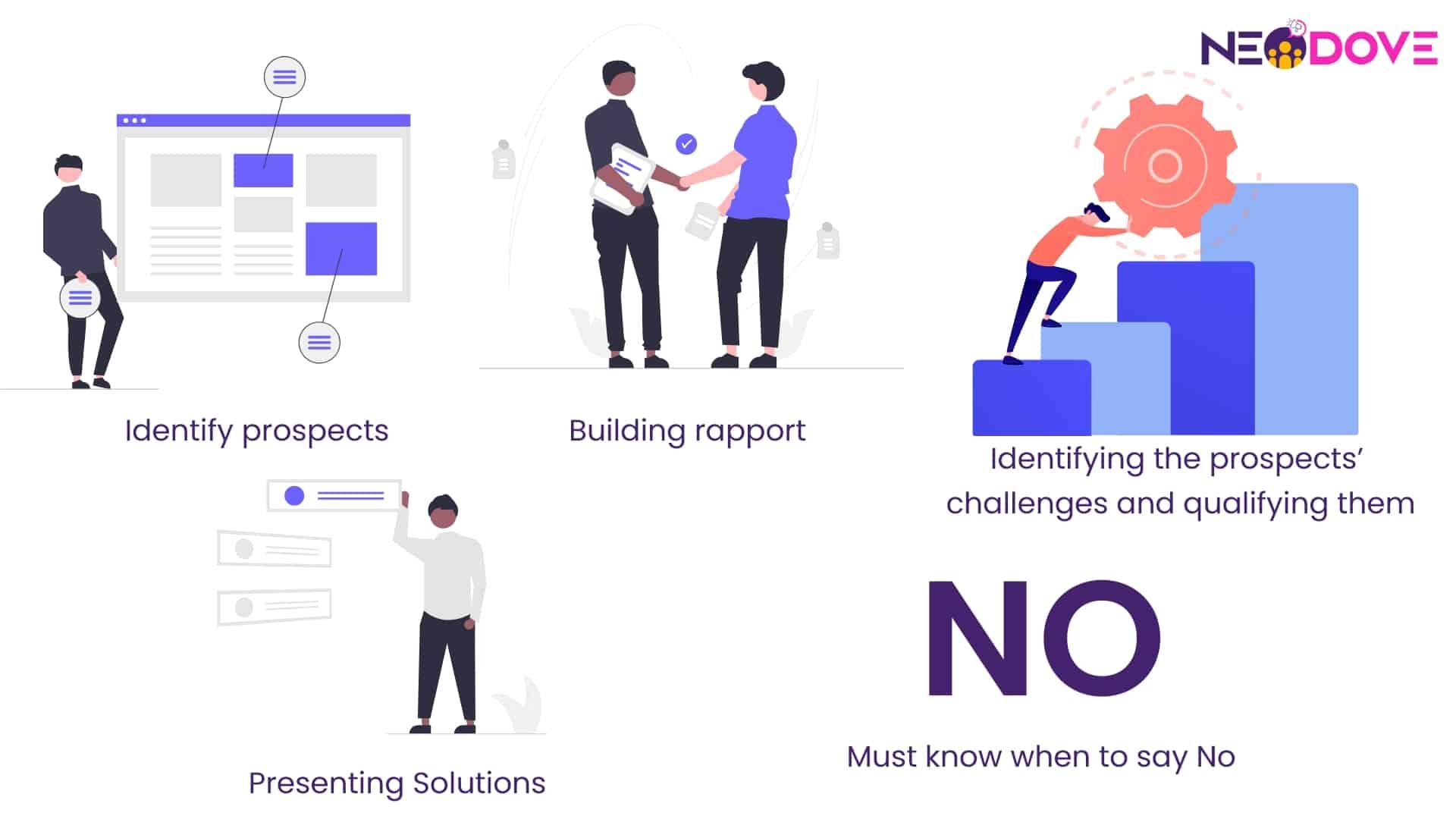
Implementing Effective Sales Techniques for Better Conversion
To transform potential leads into loyal customers, mastering effective sales techniques is crucial. The art of selling goes beyond simply pitching a product; it involves understanding customer needs, building relationships, and providing value. Here are some strategies to enhance your sales approach and boost conversion rates.
Listen Actively: One of the most powerful tools in sales is the ability to listen. By truly understanding what your prospects are saying, you can tailor your responses to address their specific needs and concerns. This not only builds trust but also allows you to position your product as the ideal solution. Consider these techniques:
- Ask open-ended questions to encourage dialogue.
- Paraphrase their responses to show understanding.
- Maintain eye contact and positive body language.
Utilize Social Proof: People are influenced by the experiences of others. Highlighting testimonials, case studies, and reviews can significantly impact a prospect’s decision-making process. Showcase success stories to build credibility and demonstrate the effectiveness of your offerings. For instance:
| Client Name | Testimonial | Results |
|---|---|---|
| Company A | “The service was outstanding!” | Increased sales by 30% |
| Client B | “Great support and results!” | Customer retention improved by 50% |
Follow Up: Don’t underestimate the power of follow-up communications. Many sales are lost due to a lack of follow-up. A simple reminder or check-in can make a world of difference. Establish a follow-up routine that includes:
- Thank you emails post-meeting.
- Personalized messages with additional resources.
- Scheduled calls to discuss any remaining questions.
Leverage Technology: In today’s digital age, utilizing CRM tools and sales automation can streamline your processes and improve efficiency. These technologies allow sales teams to:
- Track interactions and customer history.
- Automate email campaigns for leads.
- Analyze data for better forecasting and strategy adjustments.
By implementing these techniques, you will not only enhance your sales strategy but also create a more engaging experience for your potential clients. The result? Higher conversion rates and ultimately, a thriving business.

Measuring Success: Key Metrics to Monitor Growth
In the rapidly evolving landscape of business, keeping a pulse on your growth is crucial. Monitoring key metrics helps you understand where your business stands and where it can improve. Here are some essential metrics to consider:
- Customer Acquisition Cost (CAC): This metric reveals how much you spend to acquire a new customer. Lowering your CAC while increasing customer value can significantly boost profitability.
- Customer Lifetime Value (CLV): Understanding how much a customer is worth over their lifetime helps in tailoring marketing efforts and improving customer relationships.
- Monthly Recurring Revenue (MRR): For subscription-based businesses, MRR is vital for assessing revenue predictability and growth trajectory.
- Churn Rate: This indicates the percentage of customers who stop using your service. A high churn rate can signal underlying issues with your product or customer satisfaction.
- Net Promoter Score (NPS): This is a measure of customer loyalty and satisfaction. A high NPS can indicate that your customers are likely to refer others to your business.
Each of these metrics provides a different lens through which you can analyze your growth. It’s important to track them regularly to identify trends and make informed decisions. To give you a clearer picture, here’s a simple table displaying a comparison of these metrics:
| Metric | Definition | Importance |
|---|---|---|
| Customer Acquisition Cost | Cost associated with acquiring a new customer | Helps manage marketing budgets effectively |
| Customer Lifetime Value | Total revenue expected from a customer over their lifetime | Guides customer retention strategies |
| Monthly Recurring Revenue | Predictable revenue from subscriptions | Measures business scalability |
| Churn Rate | Percentage of customers lost over a period | Indicates customer satisfaction and loyalty |
| Net Promoter Score | Customer loyalty measurement | Identifies customer advocacy potential |
When you observe patterns in these metrics, you can pivot your strategies accordingly. For instance, if your churn rate is increasing, it may be time to enhance customer support or improve your product. On the other hand, if your CLV is high, you might consider investing more in customer acquisition.
Additionally, leveraging analytics tools can streamline your data collection process. These tools can provide real-time insights, making it easier to adapt and refine your strategies. Remember, the key to success lies not just in tracking these metrics, but in translating that data into actionable insights.
As you embark on your growth journey, keep these metrics front and center. They are your roadmap to a successful and sustainable business. Monitoring them diligently will not only help you gauge your performance but also empower you to make data-driven decisions that fuel your growth.
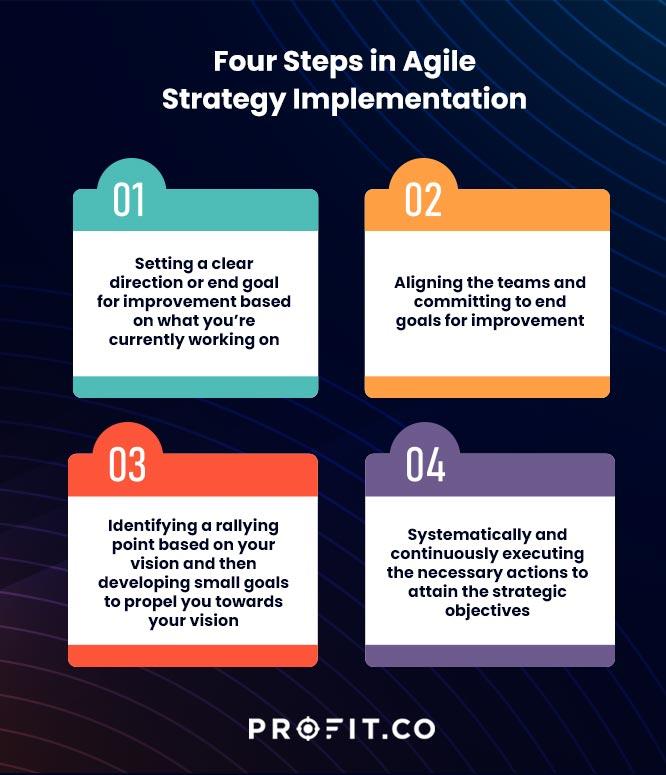
Staying Agile: Adapting Strategies to Market Changes
In today’s fast-paced business environment, the ability to pivot and adapt to market changes is crucial for sustained growth. Companies that embrace flexibility in their strategies are more likely to seize opportunities and mitigate potential risks. Here are some key approaches to ensure your business remains agile:
- Continuous Market Research: Stay ahead of trends by regularly conducting market research. Use surveys, social listening tools, and competitor analysis to gain insights into consumer behavior and preferences.
- Embrace Technology: Leverage technology to streamline operations and enhance customer experiences. Implementing CRM systems or using data analytics can provide valuable insights that drive strategic decisions.
- Foster a Culture of Innovation: Encourage your team to think creatively and propose new ideas. Regular brainstorming sessions can lead to breakthroughs that keep your offerings fresh and aligned with market demands.
- Develop Strategic Partnerships: Collaborations with other businesses can open new channels and resources. Identify partners whose strengths complement your own to expand your reach and capabilities.
Being responsive to customer feedback is another critical component. Actively soliciting input from your audience not only demonstrates that you value their opinions but also helps you identify areas for improvement or new opportunities. Create feedback loops through:
- Surveys and focus groups
- Social media interactions
- Online reviews and testimonials
To effectively manage change, consider implementing regular strategy reviews. Set aside time each quarter to assess your business direction against current market conditions. This practice will not only keep you aligned with your goals but also provide a platform to recalibrate your strategies as necessary.
Lastly, it’s essential to remain customer-centric. Create a feedback-driven environment that adapts to consumer needs and preferences. Engaging with your customers through personalized marketing and tailored experiences can lead to loyalty and repeat business.
| Strategy | Benefits |
|---|---|
| Continuous Market Research | Identify trends early, adapt offerings |
| Embrace Technology | Increase efficiency, better customer insights |
| Foster Innovation | Encourage fresh ideas, enhance competitiveness |
| Strategic Partnerships | Expand reach, share resources |
| Regular Strategy Reviews | Stay aligned, proactively manage risks |
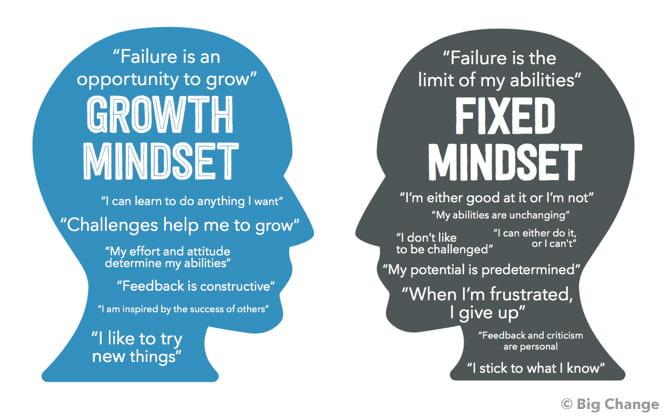
Cultivating a Growth Mindset Across Your Organization
In today’s fast-paced business world, fostering a culture that embraces continuous learning and adaptation is essential for success. A growth mindset encourages employees to view challenges as opportunities for development rather than obstacles. Here’s how you can cultivate this mindset throughout your organization:
- Encourage Open Communication: Create an environment where employees feel safe to share ideas and feedback. Regular team meetings and one-on-ones can facilitate this and promote a culture of collaboration.
- Celebrate Learning Moments: Recognize and reward efforts, not just outcomes. Celebrating failures as learning experiences can empower employees to take risks without fear of repercussions.
- Provide Access to Learning Resources: Invest in training programs, workshops, and online courses. Empowering employees with knowledge enhances their skills and reinforces the belief that growth is a continuous journey.
- Lead by Example: Leadership plays a crucial role in setting the tone for a growth-oriented culture. Leaders should openly share their learning experiences and challenges, demonstrating that growth is a lifelong process.
To further illustrate the impact of a growth mindset, consider the following table that highlights companies known for their commitment to developing such a culture:
| Company | Growth Mindset Initiative | Outcome |
|---|---|---|
| Research and Development Programs | Innovations leading to new product lines | |
| Zappos | Employee Training and Development | High employee satisfaction and retention rates |
| Microsoft | Cultural Transformation Initiatives | Increased adaptability and market responsiveness |
Encouraging a growth mindset isn’t just about implementing specific programs; it’s about weaving this philosophy into the very fabric of your organization. Consider integrating the following practices:
- Mentorship Programs: Pairing less experienced employees with seasoned mentors can accelerate learning and foster a culture of support.
- Feedback Loops: Establish regular feedback mechanisms that allow employees to understand their progress and areas for improvement.
- Flexible Goal Setting: Encourage teams to set flexible goals that can evolve based on new insights and changing market dynamics.
By embedding these principles into your organization, you create an atmosphere where learning and growth are prioritized, leading to innovative solutions and improved performance. In essence, cultivating a growth mindset can be the catalyst for your organization’s accelerated growth and long-term success.
Frequently Asked Questions (FAQ)
Q&A: 7 Business Development Strategies: Proven Ways to Grow Fast
Q: What are the main benefits of implementing effective business development strategies?
A: Great question! Effective business development strategies can significantly enhance your growth trajectory. They help you identify new market opportunities, establish valuable partnerships, and ultimately increase your revenue. Plus, they can lead to better customer retention and improved brand visibility. Who doesn’t want that?
Q: Can you explain the first strategy?
A: Absolutely! The first strategy is networking. Building relationships with industry peers, potential clients, and influencers can open doors you never knew existed. Attend industry events, join professional groups, and actively engage on social media. Remember, it’s not just about meeting people; it’s about creating genuine connections that can lead to collaborative opportunities.
Q: What about leveraging digital marketing?
A: Leveraging digital marketing is the second strategy, and it’s a game-changer! In today’s digital age, having a strong online presence is crucial. Use SEO, content marketing, and social media to reach your target audience. By creating valuable content that resonates with your audience, you position your brand as a thought leader, which can attract new clients and partnerships.
Q: I’ve heard about the importance of customer feedback. How does that fit in?
A: Customer feedback is vital and ties into our third strategy: continuous improvement. Listen to your customers! Their insights can help you refine your offerings and address pain points. By being responsive to their needs, not only do you enhance customer satisfaction, but you also create loyal advocates for your brand. Happy customers are your best marketing tool!
Q: What’s the fourth strategy you recommend?
A: The fourth strategy is diversifying your offerings. This means expanding your product or service line to meet the evolving needs of your market. Conduct market research to identify gaps in your offerings and consider bundling services or introducing complementary products. Diversification can attract new customers and increase sales from existing ones.
Q: Can you elaborate on the importance of strategic partnerships?
A: Definitely! Strategic partnerships are the fifth strategy, and they can accelerate your growth. Collaborating with other businesses can provide access to new markets and resources. Look for companies that complement your services but aren’t direct competitors. Together, you can create synergistic solutions that benefit both parties and provide more value to customers.
Q: What role does data analysis play in business development?
A: Data analysis is crucial and corresponds to our sixth strategy: informed decision-making. By analyzing data, you can identify trends, understand customer behavior, and measure the success of your strategies. Use analytics tools to gain insights that drive your business decisions. The more informed your choices are, the better your outcomes will be.
Q: Lastly, what’s the seventh strategy?
A: The seventh strategy is investing in professional development. Equip your team with the skills they need to excel. Offer training sessions, workshops, and encourage continuous learning. A knowledgeable team is your strongest asset, driving innovation and efficiency within your business. When your team grows, your business grows!
Q: Any final tips for businesses looking to implement these strategies?
A: Sure! Start small and be patient. Growth takes time, and not every strategy will yield immediate results. Monitor your progress, be adaptable, and don’t hesitate to pivot if something isn’t working. Most importantly, stay focused on building relationships and delivering value. That’s what truly drives sustainable growth!
This Q&A format aims to engage readers in a conversational manner while effectively conveying the key points of the article.
Future Outlook
And there you have it—seven powerful business development strategies that can propel your company to new heights! By embracing these proven approaches, you’re not just setting yourself up for growth; you’re creating a dynamic foundation that can adapt and thrive in today’s ever-changing market.
Remember, successful business development isn’t a one-size-fits-all formula. It’s about finding the right mix of strategies that align with your unique goals and values. Whether you decide to dive into networking, harness the power of social media, or leverage data analytics, the key is to stay proactive and open to new opportunities.
So, why wait? Start implementing these strategies today and watch your business flourish. With determination, creativity, and a willingness to adapt, you can achieve remarkable growth and create lasting success.
If you found this article helpful, share it with your network and let’s start a conversation about which strategies you’re excited to implement. Remember, the journey of a thousand miles begins with a single step—let’s take that step together!






